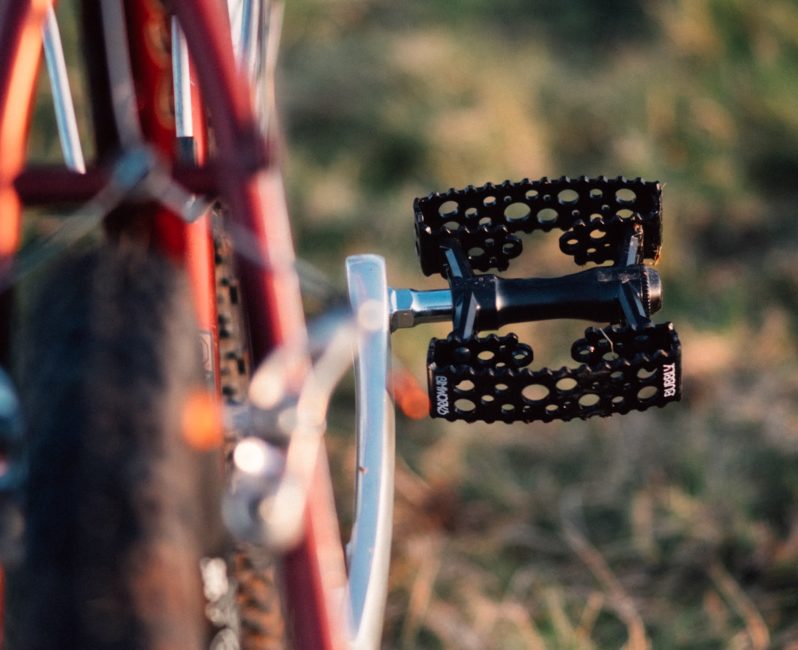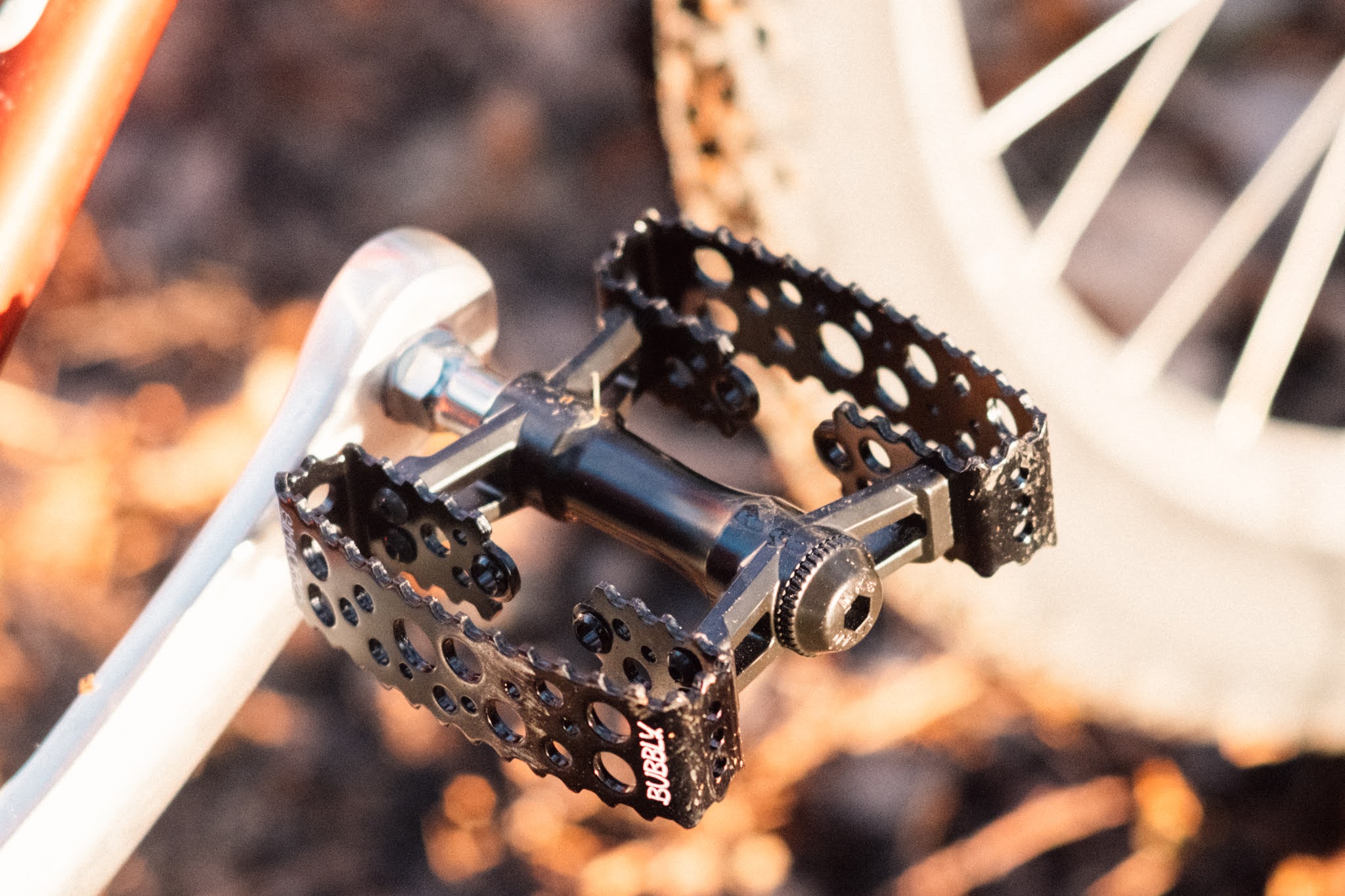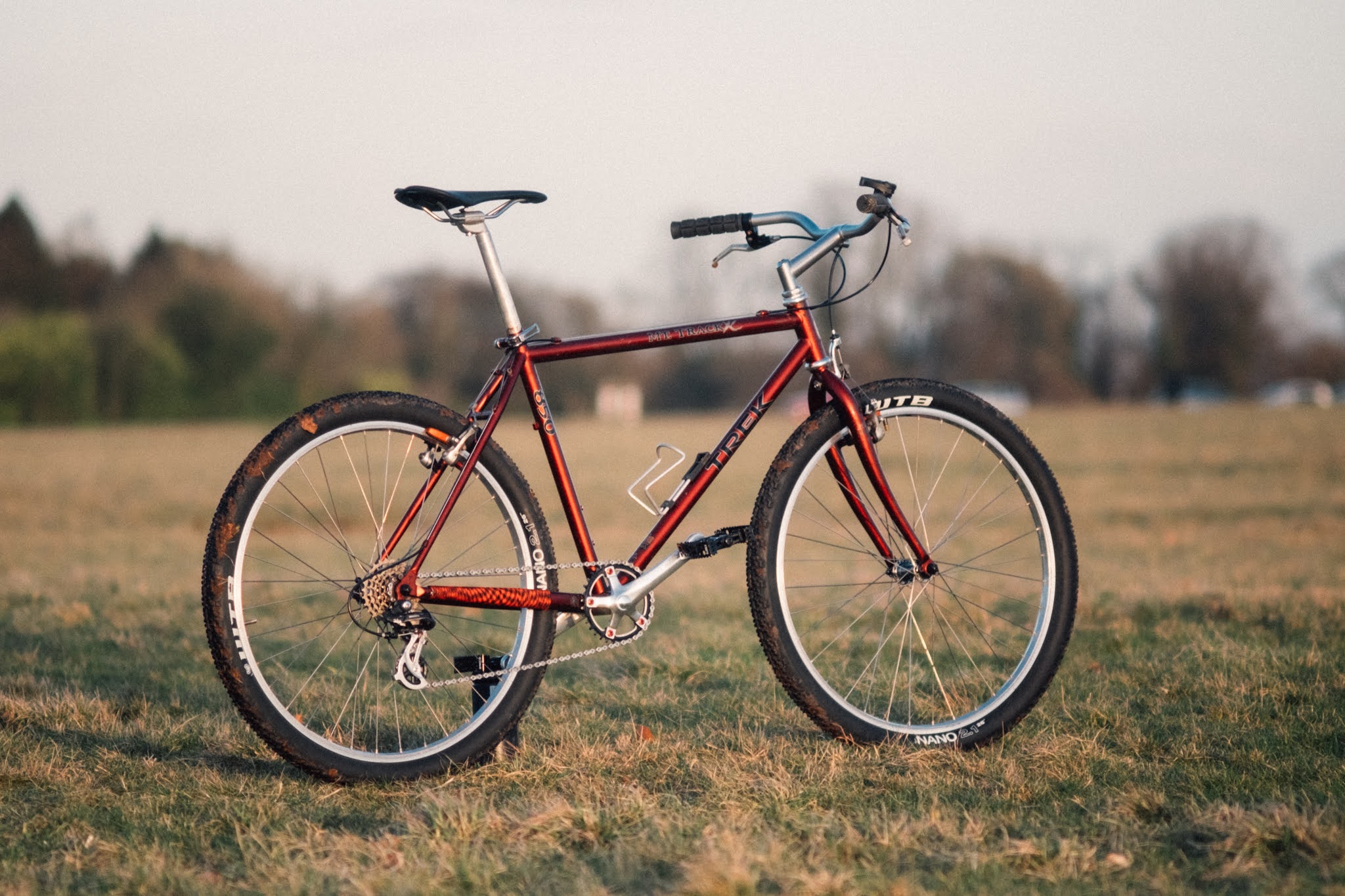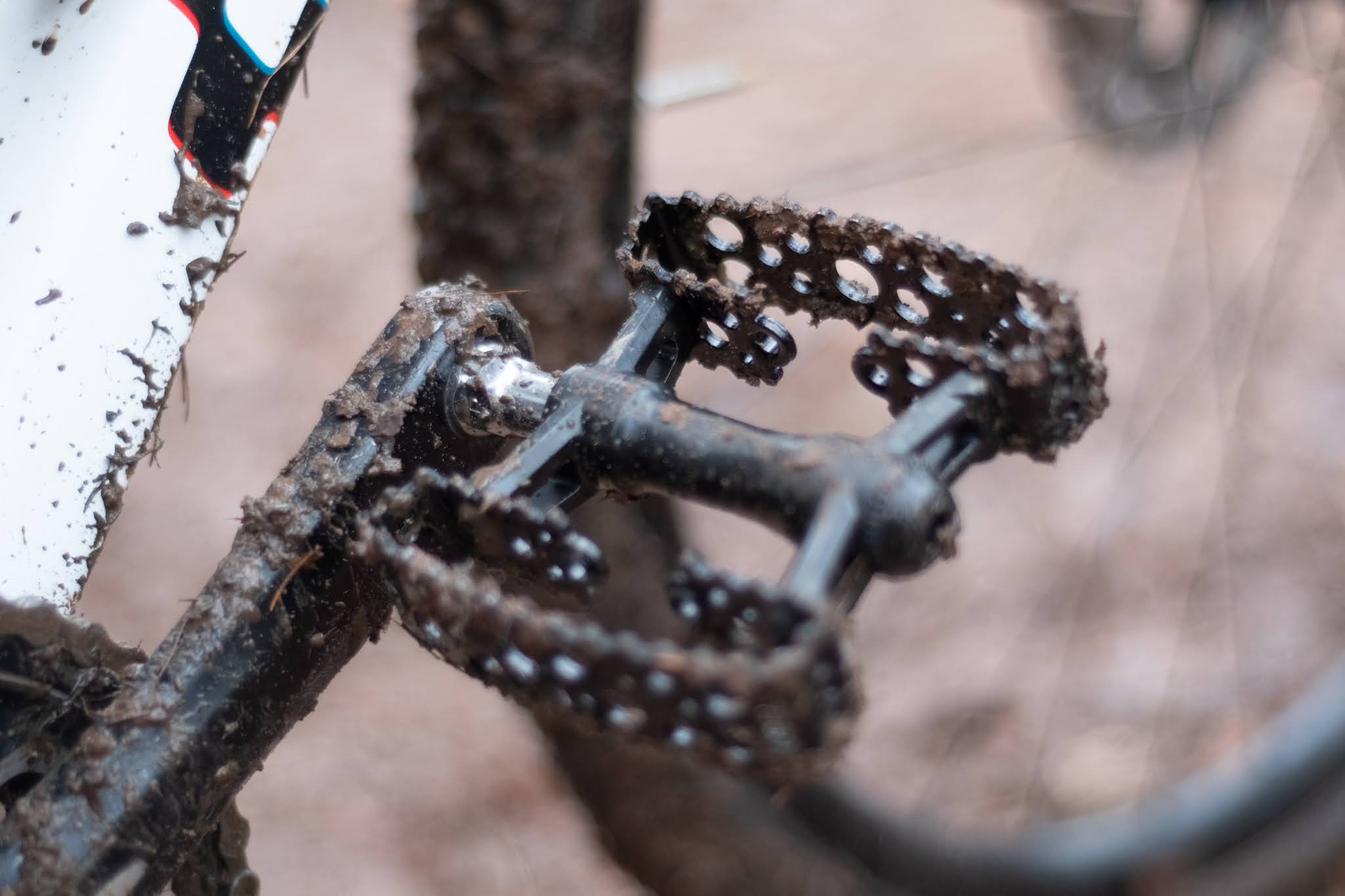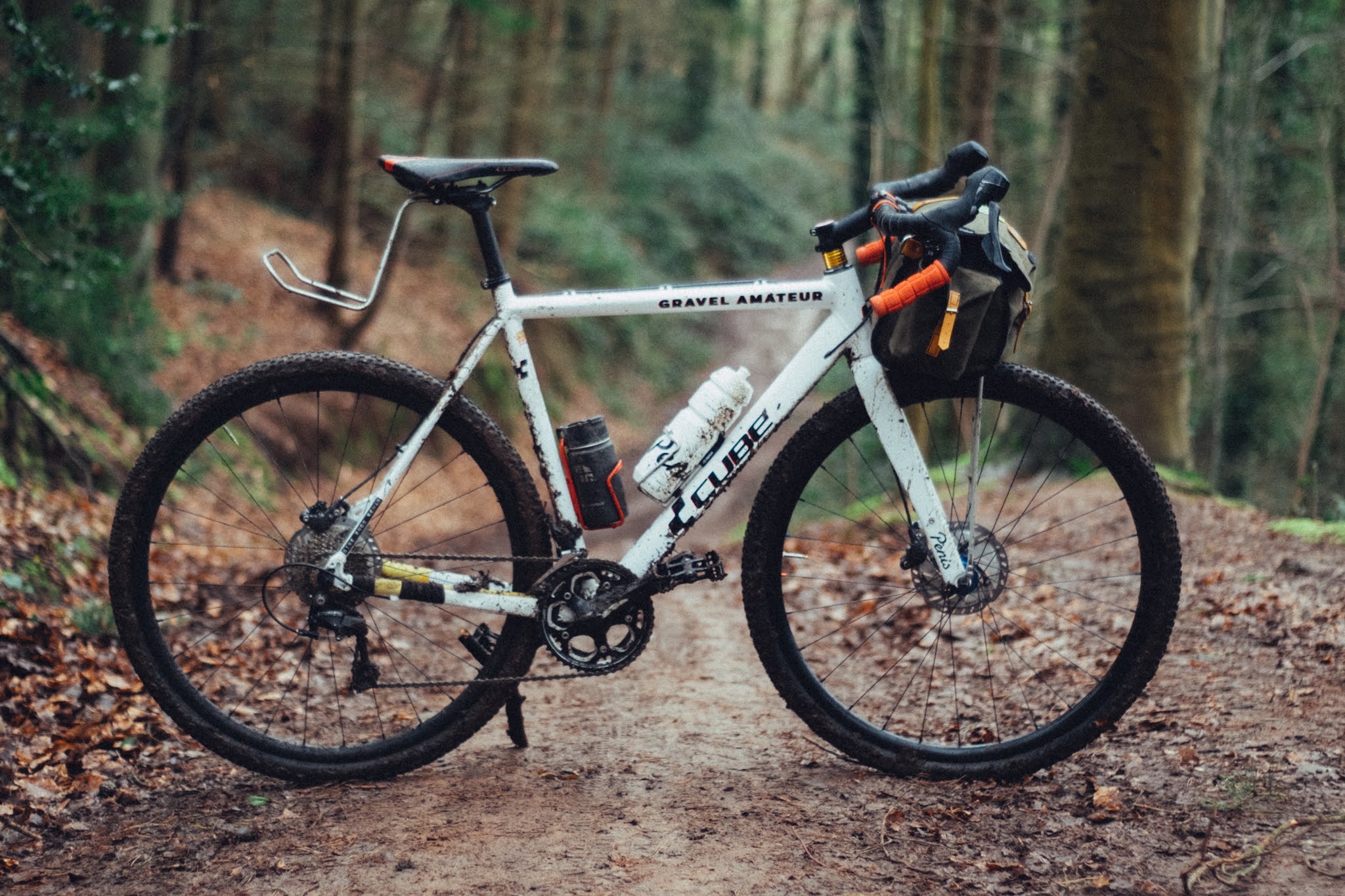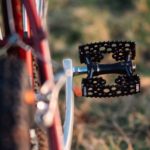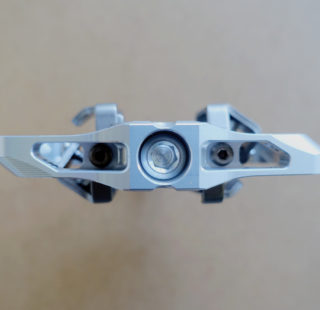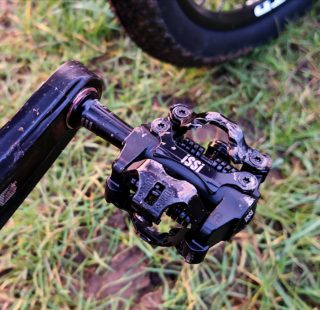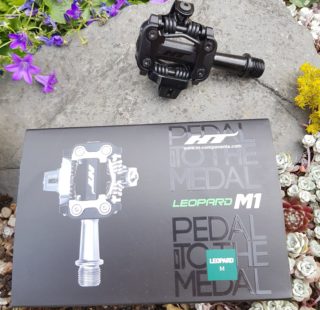Trendy British cycling boutique Fresh Tripe got in touch to offer us a pair of the new 2021 SimWorks Bubbly pedals on test, so we set our alt-cycling correspondent, Will Jones of @ZetlandCycles, on the case.
A Japanese collaboration in pedal tech
Given that both SimWorks and the Mikashima Industrial Company aren’t exactly household names I’m going to begin with a bit of a history lesson, as particularly the backstory of MKS (the pedal brand of the Mikashima Industrial Company) has a lot of influence over the design of these rather beautiful pedals.
MKS have been making bicycle pedals in Japan since 1946, after a brief foray into aircraft componentry, with a primary focus on build quality and longevity. They use a harder aluminium alloy than the industry standard to make the pedal bodies, and cold forge their own steel axles on site. However, despite making some beautiful and famously smooth pedals, the designs within their lineup are more at home on a classic audax bike than anything overly adventurous. Think leather toe straps and beautiful polished chrome, as opposed to baggy flannel and gettin’ rowdy.
The SimWorks Bubbly pedals
The packaging is pleasing, with the bare minimum of plastic despite these being a premium set of pedals. As soon as you take them out of the packaging the first thing you’ll do is give them a spin. Hold the axle, and with the slightest tap on the body they glide for what seems like an eternity compared to any other pedal I’ve used. This is thanks to triple sealed cartridge bearings (NJS approved, if you want to take a dive into Japanese Keirin racing), two on the inside end and one on the outside. I really cannot overstate how smooth these bearings are.
It took me days to fit them onto the bike, not because of any problem with the threads, but because every time I picked them up I would just spin them and be mesmerised and forget what I was meant to be doing. I was dubious as to whether I’d notice the bearings while actually riding, but you really feel the difference (or lack of any resistance), especially if you’re swapping from a slightly gravelly pair.
Now we’ve established that they’re smooth as a Sinatra album after a cup of Horlicks it’s also worth pointing out that despite looking like they’d be heavier than a pub lunch after a long walk, they are remarkably svelte at just shy of 386g (claimed 392g). This is only 30g heavier than the fibreglass bodied HT PA03A, which I’ve been running on my Rockhopper for a year or so. I imagine it has something to do with being covered in lots of tiny holes.
They’re also a little on the pricey side, but at £95 they’re only marginally more expensive than some Shimano 105 road pedals, and they’ll likely be inherited by your grandchildren if that helps justify the cost. While the black coating on the top of the teeth wore off fairly quickly in sloppy conditions, they shrug off actual damage much better than any plastic bodied pedal will. These are also available in silver and bronze too, so you can match to your heart’s content.
Unfortunately, despite being manufactured to the tightest of tolerances, and light enough to be competitive, they aren’t hugely grippy. In the dry, on smoother surfaces they’re perfectly fine, but one foot dab on a dewy field, and things start to go awry. Even in a fresh pair of Vans, with a grippy sole, I found myself slipping about with any hint of moisture, and I was even nearly booted off them completely following a particularly botched gearshift. If you like to adjust your foot position regularly, or don’t want to tear up the soles of your shoes then these are ideal, but for anything technical they do cause you to think twice. If you’re planning on getting airborne anytime I’d definitely look for something more performance-oriented.
I did find the grip was improved markedly by placing the pedal under the arch of the foot, rather than the ball, but this will also have some biomechanical implications (primarily utilising your calves less and your hamstrings and glutes more). It also increases the risk of pedal strike, which was particularly evident when I tried running them on my cross bike (flat pedal grav anyone)? I did worry that the square ends would mean I’d end up standing on them after dabbing a foot compared to the more common parallelogram design of flat pedals nowadays, but in reality this was rarely an issue.
I tested the SimWorks Bubbly pedals on my cross bike, and on a rigid MTB, and in both cases the lack of grip detracted from the ride. I think the problem is modern bikes are so taught and crisp than bikes of days gone by that an old fashioned pedal like this, despite its new outfit, feels a little jarring. I also found that in muddy conditions I couldn’t extend the effective range of my pedal stroke by pulling backwards as I would usually do with a set of standard flats with big pins in them.
Then I fitted the SimWorks Bubbly pedals to my tandem. Somehow, when ridden alongside something made of flexy steel, with friction shifting and no pretensions to performance they made total sense. They felt at home, and no longer detracted from the ride. If anything they added to it. Their wonderful smoothness could be appreciated when I (we, rather) were no longer focussing on speed. Also the ability to adjust foot positioning without lifting my foot off was a bonus, as stopping and starting pedalling on a tandem takes some careful communication.
The SimWorks Bubbly pedal verdict
Buying these pedals might not be a logical decision, but that’s OK. Much like owning an Alfa Romeo, or deciding to renovate a dilapidated French chateau (or tandem in my case), some things can’t be distilled into a price:performance ratio. If you want to buy these pedals just to marvel at the smooth bearings I suggest you buy a fidget spinner, but if you have a bike where ultimate performance isn’t at the heart of the experience, or if you’re only ever riding on smooth dry trails then ignore the score below and buy them for how they’ll make you feel, because they really are beautiful, both visually and to ride in the right context. That’s why they’re going to live on my tandem for a long time, where they can set my heart aflutter for many years.
Last modified: 3rd March 2021
